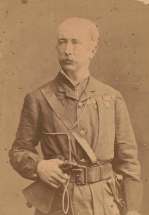Pallister offers Manitobans more freedom, green-lighting third phase of reopening Sunday
Read this article for free:
or
Already have an account? Log in here »
To continue reading, please subscribe:
Monthly Digital Subscription
$19 $0 for the first 4 weeks*
- Enjoy unlimited reading on winnipegfreepress.com
- Read the E-Edition, our digital replica newspaper
- Access News Break, our award-winning app
- Play interactive puzzles
*No charge for four weeks then billed as $19 plus GST every four weeks. Offer only available to new and qualified returning subscribers. Cancel any time.
Read unlimited articles for free today:
or
Already have an account? Log in here »
Hey there, time traveller!
This article was published 16/06/2020 (1654 days ago), so information in it may no longer be current.
Rather than a day of rest, Sunday is going to be a day of relief for active Manitobans fed up with restrictions on what they could do and where they could go during the past three months.
“To me, it feels like three years,” Premier Brian Pallister said Wednesday announcing Phase 3 of Manitoba’s reopening plan will go into in effect June 21.
It’s bigger and broader than the draft plan he unveiled last week.

“Some of the changes that were made following public feedback to our plan include removing the maximum capacity of 300 people at any site provided that the gathering can be physically divided into subgroups of 50 or fewer indoors or 100 or fewer outdoors to a maximum of 30 per cent usual capacity,” Pallister said.
The final version of the plan lifts occupancy limits for health-care and retail businesses, restaurants, bars, beverage rooms, brew pubs and distilleries — as long as physical distancing can “reasonably” be maintained. The draft plan was to limit capacity to 75 per cent.
Manitobans can venture further afield, too, without having to self-isolate for 14 days when they return home. Starting Sunday, it’s not required for travel throughout Western Canada and the Territories and as far east as Terrace Bay, Ont. — 900 kilometres east of Winnipeg and 218 kilometres past Thunder Bay. These are places that are well under Canada’s average of 265 COVID-19 cases per 100,000 people. Northwestern Ontario has a positive test percentage that’s below zero, similar to Manitoba.
“We know there are low test results west of Terrace Bay,” said Pallister, explaining the rationale for extended the safe zone for travel that far east into Ontario.
“Some of the changes that were made following public feedback to our plan include removing the maximum capacity of 300 people at any site provided that the gathering can be physically divided into subgroups of 50 or fewer indoors or 100 or fewer outdoors to a maximum of 30 per cent usual capacity.”
– Premier Brian Pallister
He said Manitobans might not have to self-isolate after visiting places with direct flights from Winnipeg, such as Halifax, in the not-too-distant future.
“It’s on the radar,” the premier said, referring to Nova Scotia specifically. “I think, obviously, we’re hopeful and we’ll continue to monitor the situation both there and here and elsewhere to look at moving further restrictions back as we can do so safely in the future.”
And the province’s roadmap to recovery released Wednesday says it will consider lifting self-isolation requirements for sectors other than trucking that have “necessary travel” out of the province and “satisfactory plans” to address public health requirements.
Devil is in the details as restrictions lift
Manitoba restaurants can open up fully, if they install protective measures, and visitors to Manitoba from some parts of Canada will no longer have to self-isolate for two weeks before going out in public.
Premier Brian Pallister announced a raft of changes as part of phase three of the province’s gradual reopening of the economy after weeks of lockdown to prevent the spread of COVID-19.
Manitoba restaurants can open up fully, if they install protective measures, and visitors to Manitoba from some parts of Canada will no longer have to self-isolate for two weeks before going out in public.
Premier Brian Pallister announced a raft of changes as part of phase three of the province’s gradual reopening of the economy after weeks of lockdown to prevent the spread of COVID-19.
The changes, which will take effect Sunday, include:
Restaurants:
On the surface, it appears restaurants received good news from the province. The catch is they must shell out more money to protect customers.
The province decided to completely drop capacity limits for restaurants, bars, beverage rooms, brew pubs, microbreweries and distilleries. Its original proposal was to allow 75 per cent capacity, from the current 50 per cent capacity, but restaurant owners complained that didn’t really help them. Customers must remain two metres apart, but can be closer if a temporary physical barrier is erected between tables.
Ann Topp, regional director of operations for Earls, said the company has plexiglass shields at restaurants in other provinces and hopes to bring them here soon.
“This is the new normal now for the foreseeable future,” Topp said. “People want to be out and the government has given us the ability to welcome more people.”
But Tony Siwicki, co-owner of the Silver Heights Restaurant and chairman of the Manitoba Restaurant and Foodservices Association, said their proposal to the government to cut the two-metre separation of tables to one metre in cases where patrons were back-to-back to each other was shot down.
“Do we put plexiglass up and what would that look like for customers?” Siwicki wondered. “That light at the end of the tunnel, get staff back, get protocols in place, get wiping surfaces, getting more people in has ended. Now there are no more phases coming and we are at half of our regular capacity. Tough choices have to be made.”
Travel to northern Manitoba:
People who travel to northern Manitoba “must continue to respect any restrictions that have been put in place by local communities and First Nations,” the province said.
Grand Chief Garrison Settee, of Manitoba Keewatinowi Okimakanak, the organization for northern chiefs, is pleased.
“First Nations in northern Manitoba have done a tremendous job of working to prevent the spread of COVID-19 to their communities,” Settee said.
“Many First Nations continue to have guidelines in place, such as closed borders and curfews, to minimize the chance that COVID-19 will come to their communities. I am encouraged that travel restrictions to northern Manitoba remain in place for now. Chiefs have been in discussions with (chief provincial public health officer) Dr. Brent Roussin about the lifting of travel restrictions. We appreciate the opportunity to meet with him on a weekly basis while the province puts new plans in place to respond to the pandemic.”
Settee said when First Nations start opening up to tourists, they will issue a statement on MKO’s website and social media accounts.
Self isolation lifted for visitors from Western Canada, the North and northwestern Ontario:
Visitors to Manitoba from the western provinces, northern territories, and northwestern Ontario (west of Terrace Bay), will no longer have to self-isolate for 14 days, beginning Sunday.
Kasper Wabinski, who owns Kasper Transportation of Thunder Bay, Ont., said that doesn’t mean he can start operating buses from northwestern Ontario to Winnipeg.
“It is a good step, but it doesn’t make much of a difference at this point,” Wabinski said on Wednesday. “The problem is First Nations are still in a lockdown and the (COVID-19) numbers there are going up. My non-First Nations traffic is minimal, so we’re going to just wait.”
kevin.rollason@freepress.mb.ca
The cast and crew of film productions and professional sports teams and staff won’t have to self-isolate when they arrive in Manitoba if they’ve self-isolated for 14 days before arriving in the province and followed “appropriate hygiene measures” while travelling. Still, no matter how famous and talented they are, anyone arriving in Canada must abide by the federal Quarantine Act requiring them to self-isolate when they enter.
Temporary or travelling amusement parks aren’t allowed in this phase but permanent outdoor amusement operations, including miniature golf and mechanical rides, are allowed as long as physical distancing can be maintained. They “should” operate at 50 per cent capacity, the 21-page plan says.
Schools are planning for K-12 classes to resume in the fall with planning and consultation underway for how that can be done safely, the plan says.
Large concerts and events won’t be allowed until September, at the earliest.
The next phase of reopening includes casinos, movie theatres and expanding personal-care home visits, and won’t happen for at least a month, Pallister said.
“We need a couple more (COVID-19) incubation periods before we make any other significant announcements or measured changes.”
Two new cases were reported Wednesday; there were none Monday or Tuesday. Public health officials are still investigating whether Wednesday’s cases are related to any previous cases, or the recent Justice 4 Black Lives rally in the city, which drew nearly 15,000 people. Three reported positive cases over the weekend were connected to a truck driver and their close contacts, a provincial spokesperson said.
Pallister reminded Manitobans to remain vigilant and to continue following the public health orders so the next phase of reopening can safely happen.
“This is a marathon, not a sprint,” he said, repeating the mantra that began in March when the shutdown began.
carol.sanders@freepress.mb.ca
— With files from Malak Abas
restoring-safe-services-phase-3

Carol Sanders
Legislature reporter
After 20 years of reporting on the growing diversity of people calling Manitoba home, Carol moved to the legislature bureau in early 2020.
Our newsroom depends on a growing audience of readers to power our journalism. If you are not a paid reader, please consider becoming a subscriber.
Our newsroom depends on its audience of readers to power our journalism. Thank you for your support.







